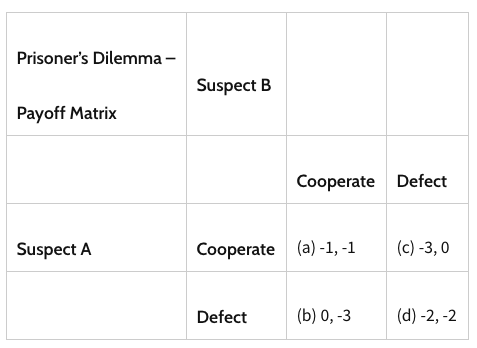“I am Loki of Asgard, and I am burdened with glorious purpose.” These words, first spoken with arrogant conviction in The Avengers, become a thread that weaves throughout Loki’s entire character arc in the Marvel Cinematic Universe. What begins as a justification for conquest evolves into a profound journey of self-discovery – one that mirrors our own quest to find meaning and purpose in our lives.
The Ikigai Intersection
The Japanese concept of Ikigai offers our first mental model for understanding purpose. Imagine four overlapping circles: what you love, what you’re good at, what the world needs, and what you can be compensated for. Your “glorious purpose” often lies at the intersection of these circles, much like how Loki’s journey forced him to reconcile his talents (manipulation, strategy, and adaptability) with what the universe actually needed from him.
Consider Loki’s evolution: In Thor: Ragnarok, he finally begins to align these elements. His skills at deception and cunning, previously used for self-serving ends, become vital tools in helping Thor save the Asgardian people. He discovers that his purpose isn’t to rule or dominate, but to use his unique abilities in service of something greater than himself.
The River Delta Model
Imagine your purpose as a river delta rather than a single, straight channel. This perfectly mirrors Loki’s journey across the multiverse in the “Loki” series, where he encounters various versions of himself – each representing different possible paths and purposes. From President Loki’s continued pursuit of power to Classic Loki’s self-imposed exile and eventual sacrifice to save others, we see how one being can manifest purpose in radically different ways.
The key insight here is that purpose isn’t a single predestined path. Just as Loki ultimately embraces multiple roles – trickster, brother, hero, agent of the TVA, protector of the timeline – we too can find purpose through various channels. His journey teaches us that we don’t have to be confined to a single role or purpose; our lives can branch out like the Sacred Timeline itself.
The Evolutionary Purpose Framework
The evolution of purpose is perhaps best exemplified by Loki’s character arc across the MCU. From his first appearance as the jealous prince seeking to prove himself worthy of the throne, to his role in “Loki” where he confronts the very nature of free will and destiny, we see a profound transformation in how he understands his purpose.
Consider these key evolutionary stages in Loki’s journey:
- Initial Purpose (Thor): Proving himself worthy of the throne
- Corrupted Purpose (The Avengers): Achieving glory through dominance
- Conflicted Purpose (Thor: The Dark World): Balancing mischief with family loyalty
- Emerging Purpose (Thor: Ragnarok): Accepting his role as an agent of necessary change
- Transcendent Purpose (Loki series): Protecting the very fabric of reality itself
This framework suggests three key questions for discovering your own purpose:
- What problems naturally draw your attention? (For Loki, it was initially chaos and disorder, which evolved into protecting the proper flow of time)
- How have your past experiences, even the painful ones, equipped you to solve specific challenges? (Loki’s understanding of deception and chaos made him uniquely qualified to protect the timeline)
- Where do you find yourself making a difference without conscious effort? (Loki’s natural ability to survive and adapt became crucial to his larger purpose)
Integration: Finding Your Own Glorious Purpose
When Loki first proclaimed his “glorious purpose,” he envisioned himself as a ruler, a god among ants. By the end of his journey, he understands that true glory lies not in ruling over others, but in serving a purpose greater than himself. His transformation from a would-be conqueror to a protector of reality itself demonstrates how our understanding of purpose can deepen and mature.
The interplay of these mental models helps us understand this evolution. The Ikigai Intersection reveals our potential areas of purpose, the River Delta Model shows how that purpose can manifest in multiple ways (just as Loki’s variants represent different expressions of his being), and the Evolutionary Framework demonstrates how our purpose grows and adapts over time.
Remember Mobius’s question to Loki: “Do you enjoy hurting other people? Making them feel small? Making them feel afraid?” This moment of confrontation forces Loki to question his conceived notion of purpose, leading to genuine growth. Similarly, we must be willing to question our initial assumptions about our purpose and remain open to deeper truths.
What makes a purpose truly glorious isn’t its scale or grandeur, but its authenticity and impact. Consider Loki’s final acts in Infinity War and his series – moments where his actions weren’t about personal glory but about protecting others and maintaining the proper order of reality itself. Sometimes our most glorious purpose emerges not from our grandest ambitions, but from our willingness to serve something greater than ourselves.
As Loki learned through his confrontations with the Time Variance Authority and He Who Remains, purpose isn’t about following a predetermined path, but about making meaningful choices in the face of cosmic uncertainty. Your glorious purpose might not involve saving the multiverse, but it will involve becoming the most authentic version of yourself in service to something greater than your own ambitions.
After all, as Loki discovered, true glory lies not in fulfilling some predetermined destiny, but in choosing, again and again, to be better than who we were yesterday. For all time. Always.




